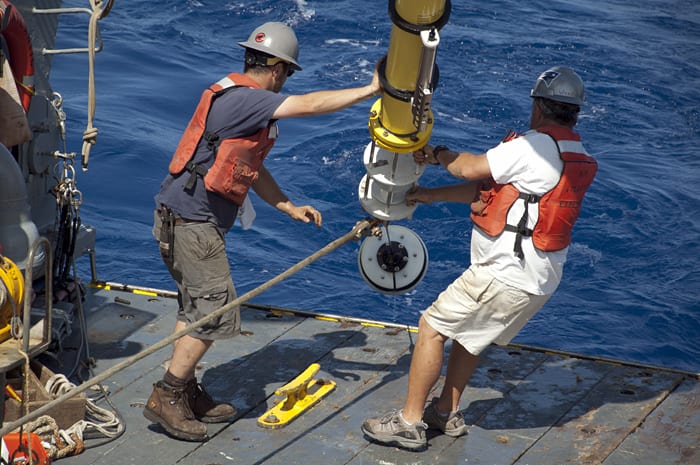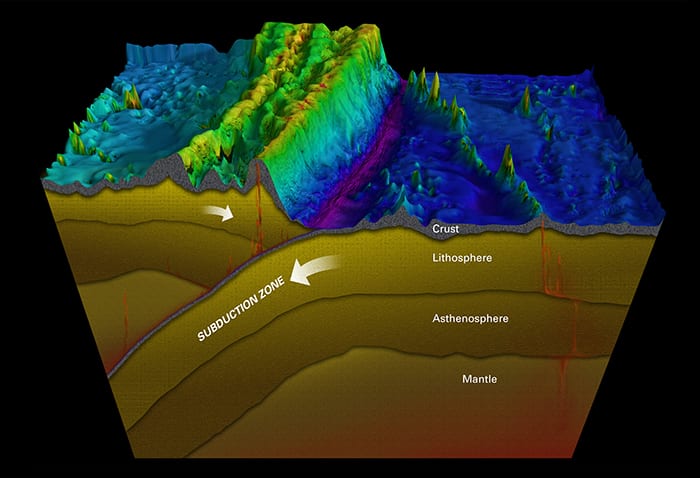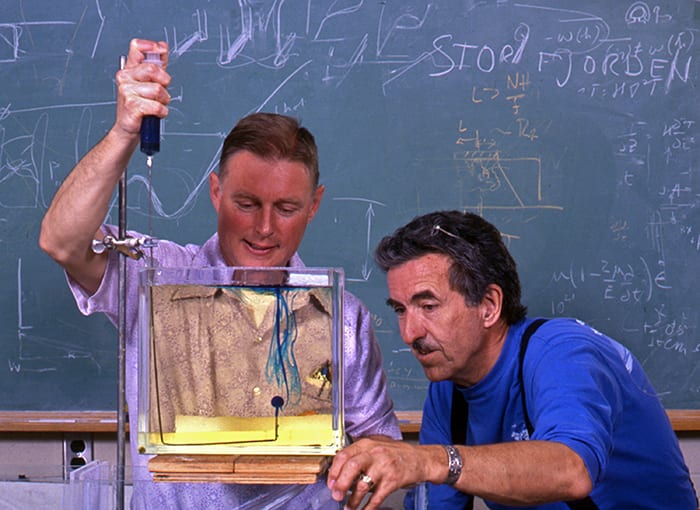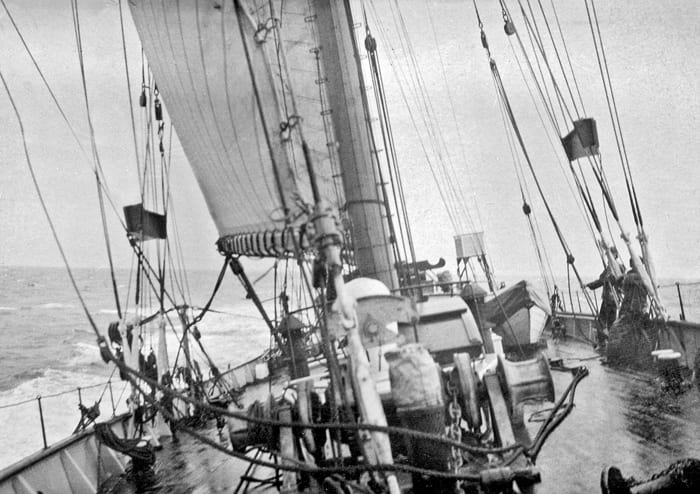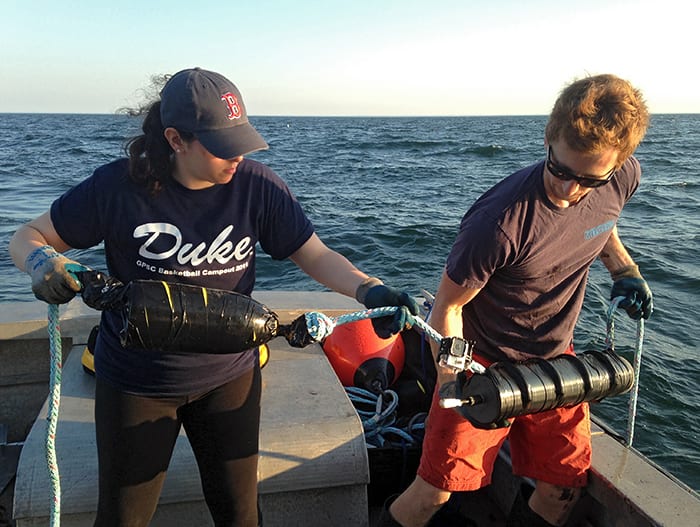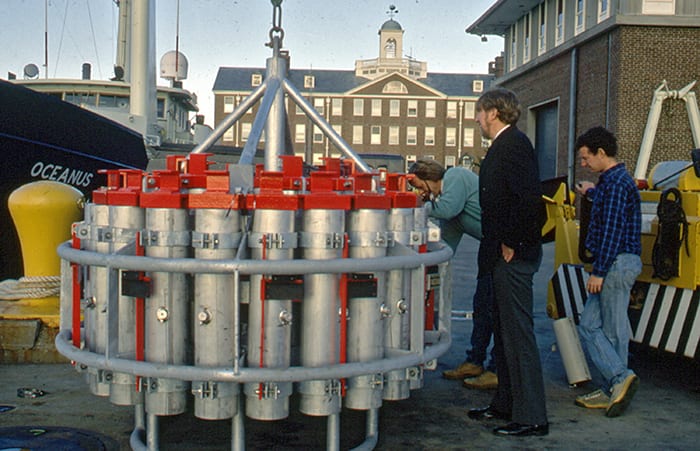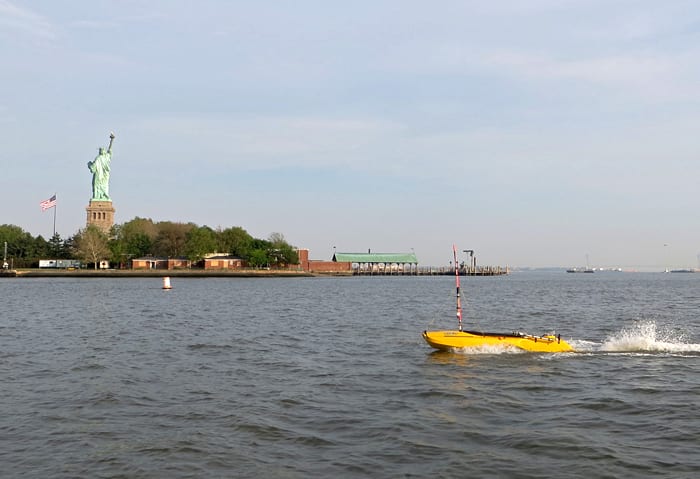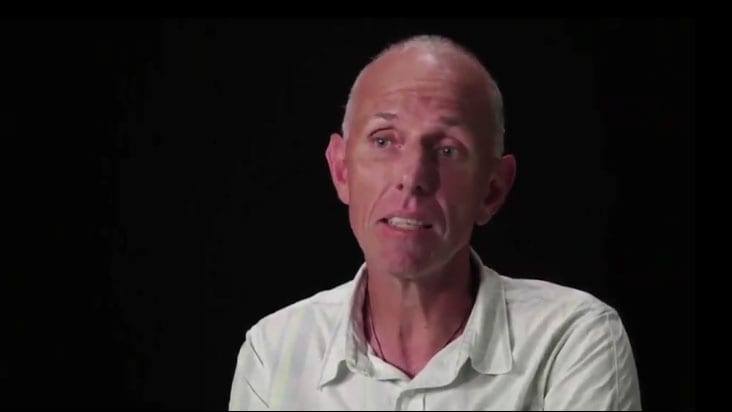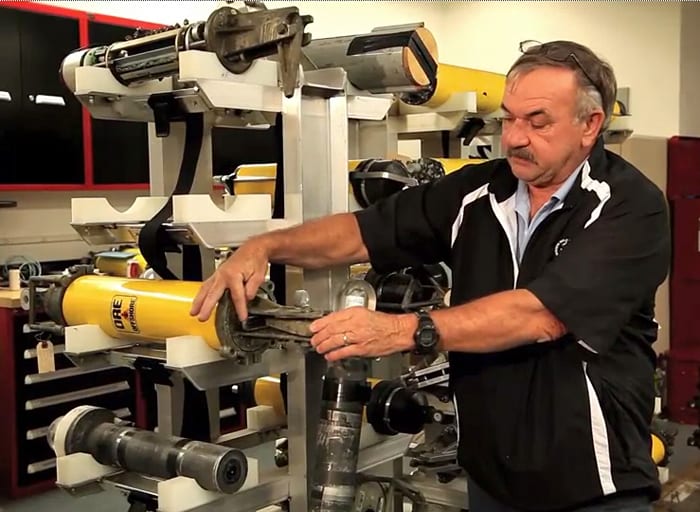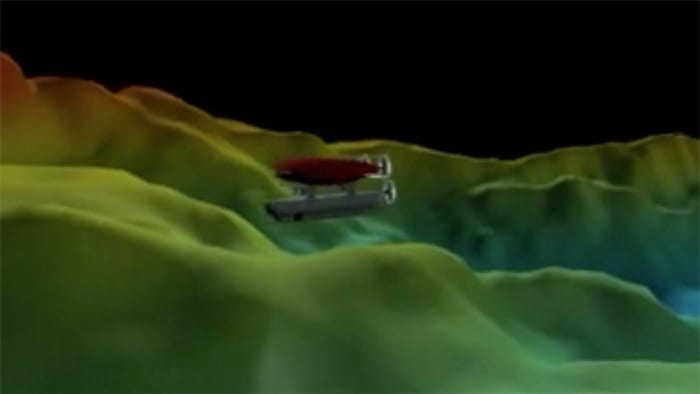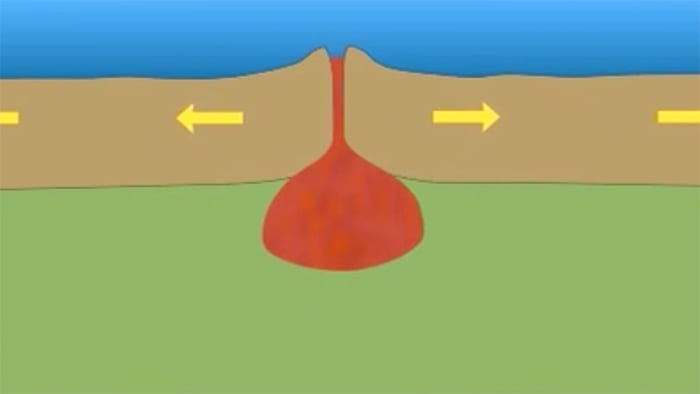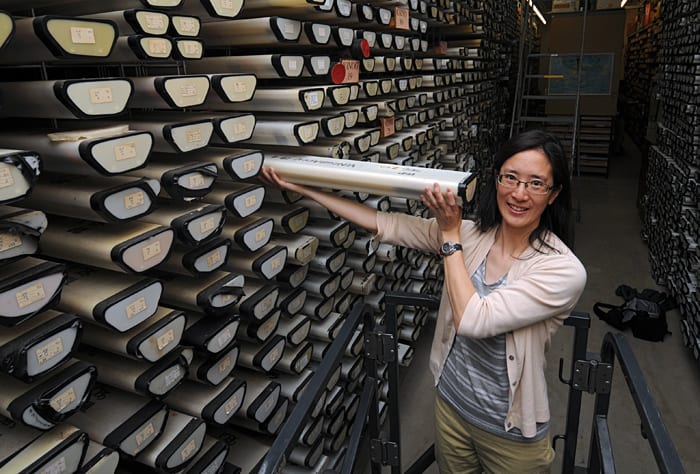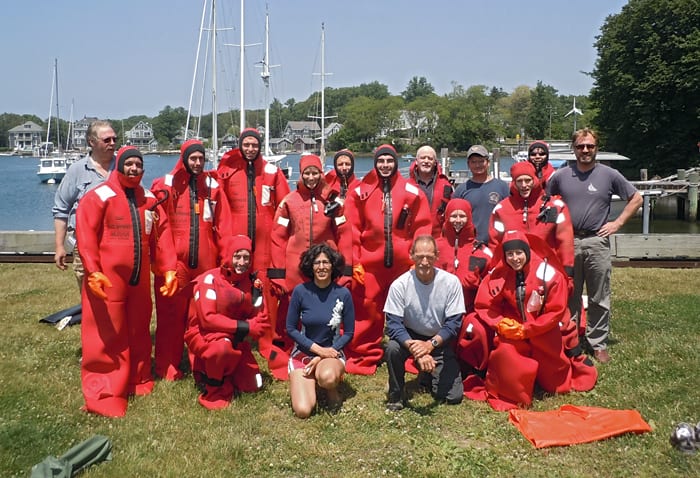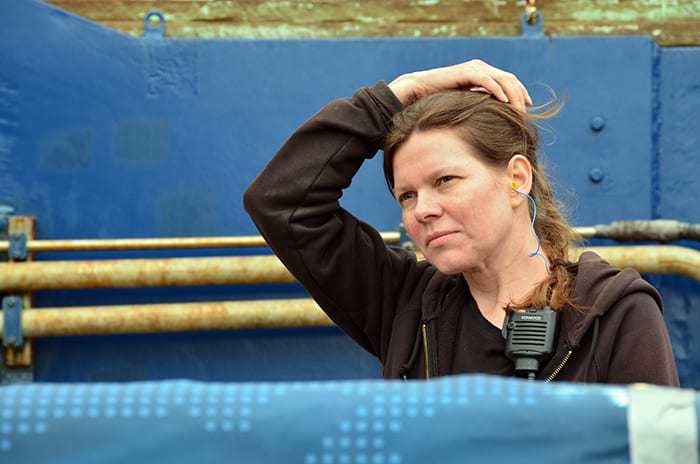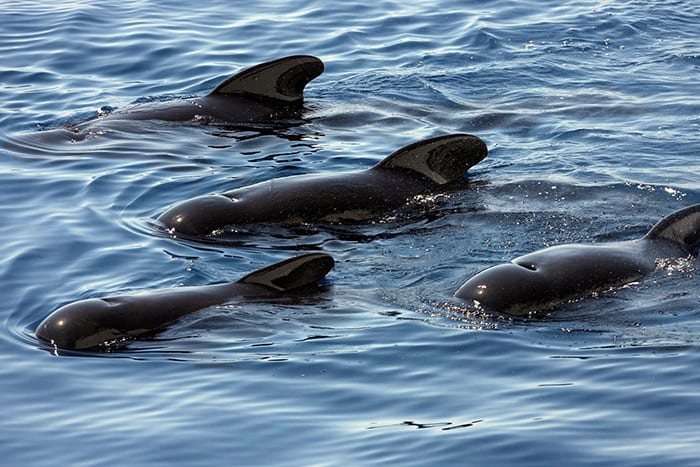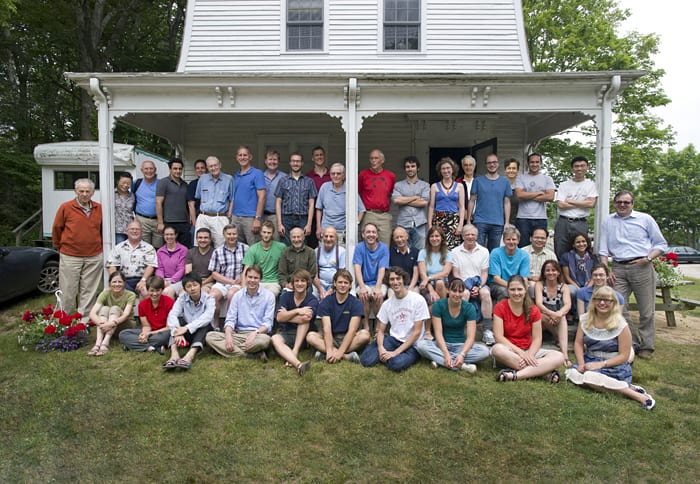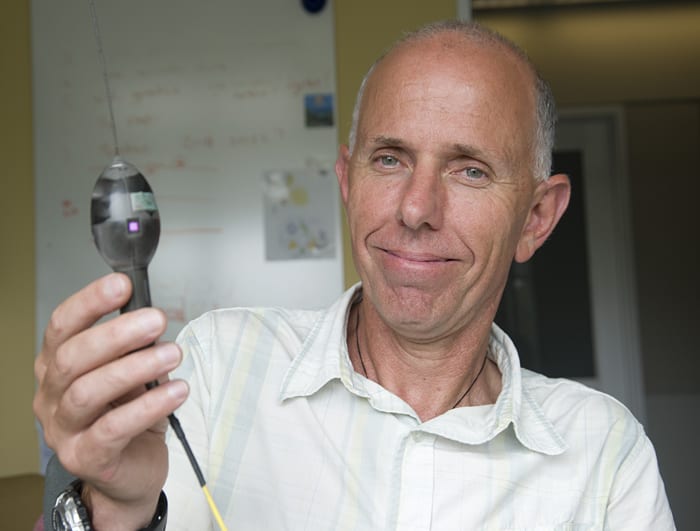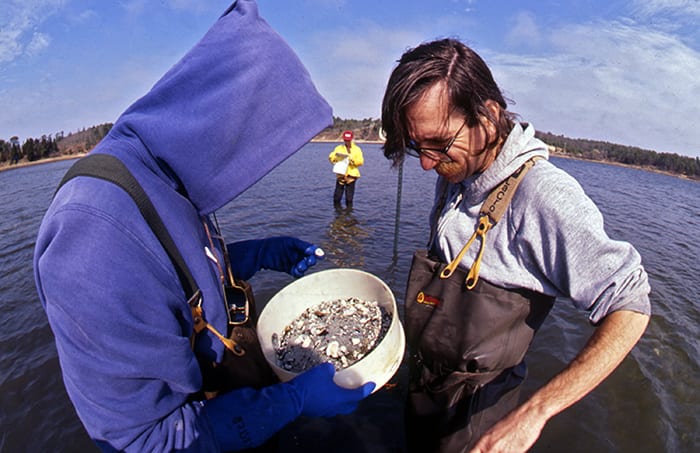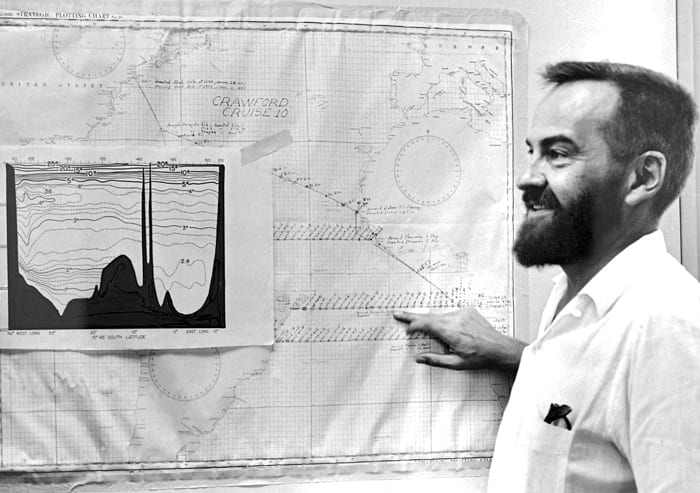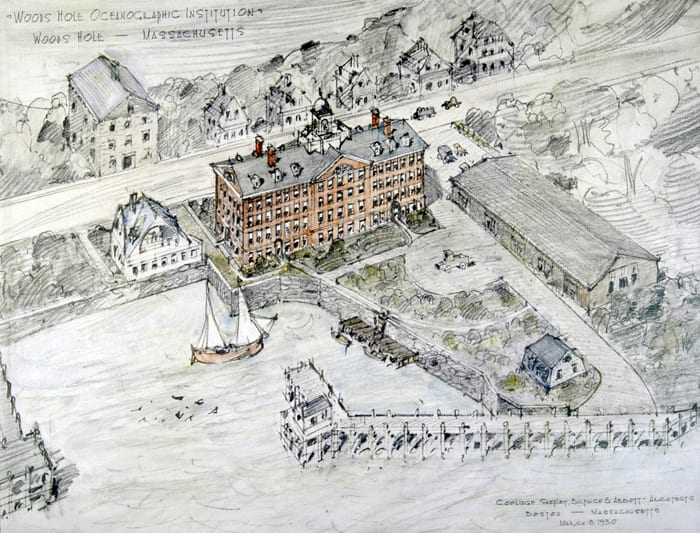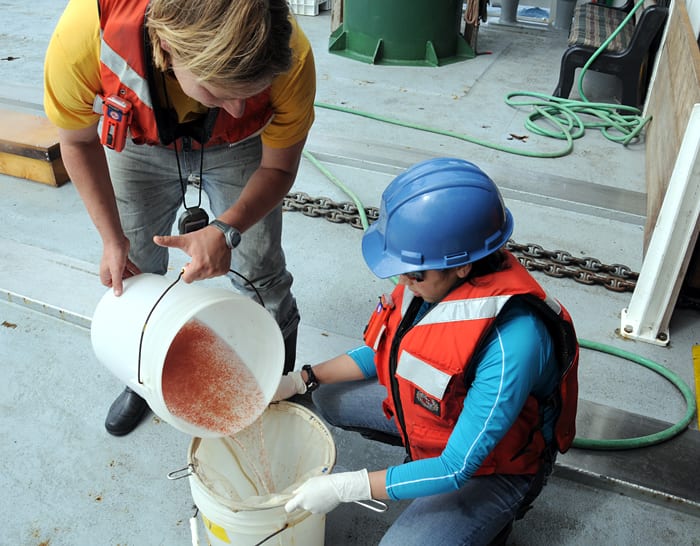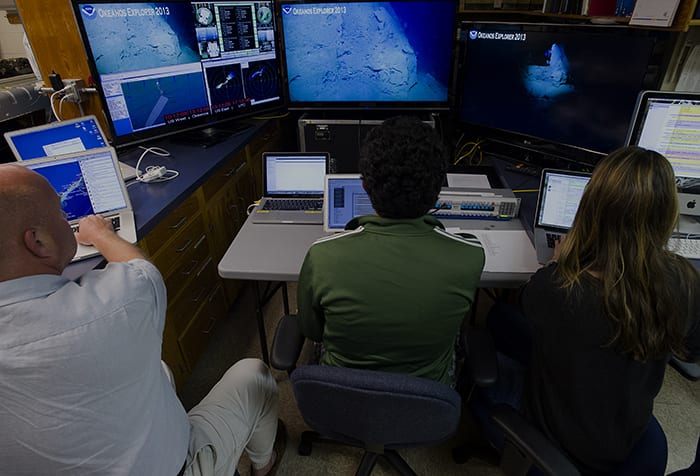Multimedia Items
A Current Affair
WHOI engineer Jeff Pietro and Scott Worrilow, manager of the WHOI Sub-Surface Mooring Operations Group (left to right), recover a current meter in an experiment led by physical oceanographer Ruth…
Read MoreDeepest Ocean
Ocean trenches, such as the Kermadec (shown here) near New Zealand, exist where one of Earth’s tectonic plates is sinking and sliding beneath another. This process, referred to as plate…
Read MoreA Fluid Science
WHOI scientists-emeriti Jack Whitehead and Stan Hart (left to right) conduct a lab experiment in geophysical fluid dynamics—the fundamental physics of oceans, rivers, magma, atmospheres, and other fluid media. Here…
Read MoreMaiden Voyage
In 1930, the newly established Woods Hole Oceanographic Institution accepted a $175,000 bid by Burmeister & Wain Ltd., of Copenhagen to build the steel-hulled ketch Atlantis. In July 1931, Atlantis…
Read MoreSun, Sea, and Sound
Working from a small boat off Cape Cod in mid-July, guest student Aimee Boucher (Duke University) and MIT-WHOI Joint Program student Nicholas Macfarlane deploy an acoustic recording device at the…
Read MorePreparing to Blow
Mike Purdy (center) and Peter Mills watch as Jim Broda prepares NOBEL (Near Ocean Bottom Explosives Launcher) for testing on the WHOI pier, circa 1990. NOBEL was developed to undertake…
Read MoreSurface Fleet
Version 2 of the autonomous surface vehicle (ASV) “JetYak” went to New York City in June, as the original was headed to Greenland. Both vehicles perform preprogrammed missions that include…
Read More5 Questions about Sharks
WHOI biologist and senior scientist Simon Thorrold discusses sharks and why they are important to a healthy ocean. Originally published online January 1, 2013
Read MoreMooring Master
Few people know more about putting moorings into the ocean and getting them back than Scott Worrilow, who arrived at WHOI in 1978 and today is head of the Sub-Surface…
Read MoreABE Animation
Maintaining a constant altitude and precision navigation, ABE is programmed to fly back and forth over the seafloor (which scientists call “mowing the lawn”), surveying the seafloor with sonar to…
Read MoreCreating New Ocean Crust
(Animation by Jack Cook, Woods Hole Oceanographic Institution) By Jack Cook, Kristen M. Kusek :: Originally published online September 14, 2007
Read MoreClearing the Waters
WHOI chemist Phoebe Lam retrieves sediment core sample GGC-37, originally extracted by WHOI’s Lloyd Keigwin in 1991, from the Seafloor Samples Laboratory. Sediment cores present geological information and are obtained when scientists drill long…
Read MoreDressed for Success
Students in the 2013 small boat safety class at WHOI pose in buoyant survival suits designed to keep them dry, warm, and afloat in the event of an accident at…
Read MoreNew Chief
Monica Hill relaxes for a moment before R/V Atlantis pulls away from the WHOI dock on May 25, on what would be Hill’s first cruise as Chief Engineer. The ship…
Read MorePilots of the Deep
Long-finned pilot whales roam in large pods with hundreds of individuals and cluster in smaller groups like this one, photographed in the Alboran Sea during a WHOI research expedition in…
Read MoreFluid Dynamics
Many people consider the porch at Walsh Cottage at WHOI to be a sacred place. Each summer since 1959, some of the greatest oceanographers, physicists, and mathematicians have gathered here…
Read MoreTagging Sharks
To reveal the hidden lives of sharks, scientists like Simon Thorrold in the WHOI Fish Ecology Laboratory are using Pop-up Satellite Archival Transmitting tags. The tags attach to sharks, recording…
Read MoreSharkCam
Right on the tail of an 18-foot great white shark is a WHOI underwater robot called REMUS—making history as the first autonomous underwater vehicle to successfully track and film a…
Read MoreSharkCam
Wading into Work
“Fieldwork” sometimes means get-into-the-water-work. Here, WHOI researchers Bruce Lancaster, Jim Weinberg, and Dale Leavitt (left to right) stand on tidal flats of Little Buttermilk Bay in Bourne, Mass., collecting soft…
Read MoreLooking Deep
WHOI’s Fritz Fuglister presents a temperature profile obtained with a bathythermograph, an instrument that measures temperature and depth when dropped from or towed behind a ship. BTs were developed at…
Read MoreBuilding for the Future
Named for WHOI’s first director, the Bigelow Lab on Water St. in Woods Hole, Mass., was WHOI’s first building. Plans called for “a brick building, 135 feet long and 50…
Read MoreRadiation Monitors
Three months after the 2011 nuclear plant disaster in Fukushima, Japan, WHOI marine chemist Ken Buesseler led an expedition to the Northwest Pacific to investigate the extent and impacts of…
Read MoreTuning In
WHOI biologist Tim Shank, JP student Santiago Herrera, and research scientist Taylor Heyl (left to right) monitor live video feeds the Okeanos Explorer in WHOI’s Redfield Laboratory. From July through August,…
Read More
